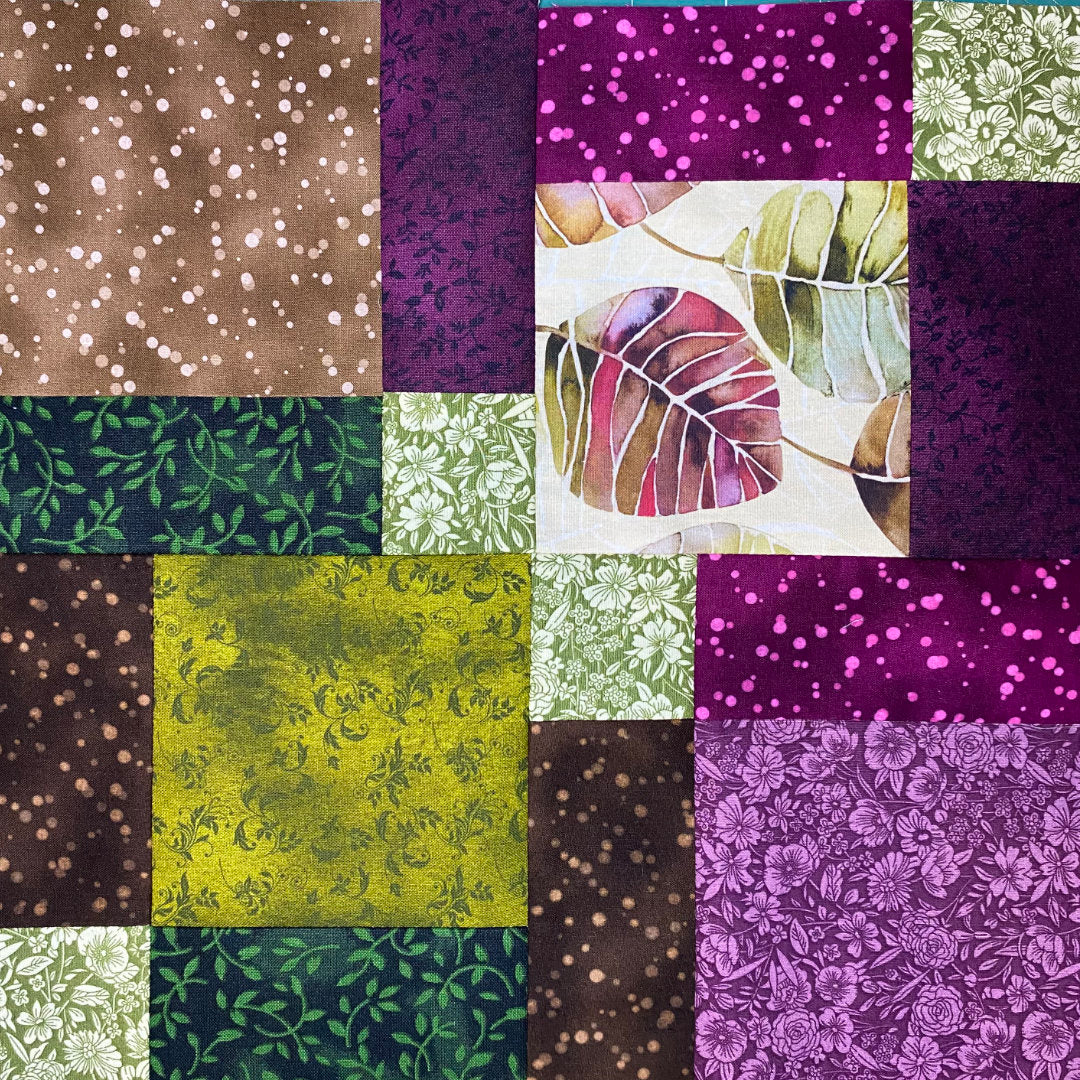
The Advantages of Nested Seams in Patchwork: Why They Make a Difference
Share
When it comes to quilting, one small detail that can make a significant impact on the quality of your finished project is how you handle your seams. Among the many seam techniques quilters use, nested seams stand out for their ability to create precise, flat patchwork. Whether you're a beginner or an experienced quilter, mastering the art of nesting seams can elevate your quilting game. In this blog post, we’ll explore the advantages of nested seams and why they should be part of your quilting toolkit.
What Are Nested Seams?
Nested seams refer to the technique of pressing seams in opposite directions so that when two pieces of fabric are sewn together, the seams "nest" neatly into one another. This reduces bulk and creates a smoother, more professional finish. It’s a simple technique that can make a noticeable difference in the accuracy and appearance of your quilt.

1. Improved Accuracy and Alignment
One of the biggest advantages of nested seams is the precision it offers. When your seams are pressed in opposite directions, they naturally align with each other at the seam intersections. This helps ensure that your points meet perfectly, which is especially important in intricate patchwork designs where small errors can become noticeable.
Nested seams act like a built-in guide, making it easier to match up your blocks and achieve a clean, professional look in your finished quilt.

Nested seams are pressed in opposite directions

2. Reduced Bulk for Smoother Quilting
Seams pressed to one side can create extra layers of fabric at the intersections, leading to bulky spots in your quilt. These thick areas can be challenging to quilt over, especially when using a domestic machine or longarm.
Nested seams significantly reduce this bulk by distributing the fabric layers more evenly. This makes the quilting process smoother and easier, whether you're doing straight-line quilting or free-motion designs. Your sewing machine (and your hands) will thank you!

3. Stronger, More Durable Seams
Quilts are meant to be used and loved, so durability is key. Nested seams create stronger intersections because the fabric is layered and interlocked in a way that strengthens the overall structure of the quilt. This added strength helps your quilt withstand the rigors of regular use and washing, keeping it beautiful and intact for years to come.
4. A Cleaner, Flatter Finish
When all of your seams are properly nested, you'll notice a much flatter finish in your quilt top. This is important not only for aesthetics but also for the quilting process itself. A flatter surface makes it easier to quilt evenly, preventing puckering or unwanted folds.
A clean, flat patchwork surface also enhances the overall appearance of your quilt, giving it that professional, polished look that every quilter strives for.

5. Time-Saving and Simplicity
Once you get the hang of nesting seams, you’ll find that it actually speeds up your quilting process. Instead of struggling to match points or pressing seams open (which can be time-consuming), nested seams allow for quicker assembly. With fewer adjustments and re-sewing, you can move more efficiently through your project.
Additionally, because you aren’t dealing with bulky seam allowances, there’s less need for trimming or fussing with seams after the fact.
Tips for Nesting Seams Successfully
- Plan Your Pressing: Before you start sewing your blocks together, plan which direction you’ll press your seams to ensure they will nest properly.
- Pin for Accuracy: Although nested seams align naturally, using pins at each seam intersection can ensure even greater accuracy.
- Check as You Go: Double-check that your seams are nesting correctly before stitching. This small step can save you from redoing parts later.
- If you find your seams are pressed the wrong direction: Press it in the right direction, then spray with a little spray starch and press again. The starch will "reset" your seam.

An example of nested seams. Also note that the center seam is pressed open - you do what you need to do to ensure a flat and less bulky finish.
Nested seams might seem like a small detail, but they can make a big difference in the quality, durability, and appearance of your quilts. By incorporating this technique into your patchwork process, you'll enjoy more precise piecing, smoother quilting, and a cleaner, more professional finish. Whether you’re a seasoned quilter or just starting out, mastering nested seams is an easy way to improve your quilting projects.
Have you tried using nested seams in your patchwork? Share your experiences and tips in the comments below! Happy quilting!
P.S. Take a look at this blog post for more help with seams!
